Learning about colors in Japanese isn’t just about adding words to your vocabulary. It’s really about understanding how deeply colors are woven into Japanese culture. Take ‘ao,’ for example. When we dive into these colors and their meanings, we’re not just learning language. We’re also seeing how colors shape the way people in Japan think and feel about their world. What do these colors tell us about Japan’s history and its present? It’s pretty fascinating when you think about it.
All Colors in Japanese
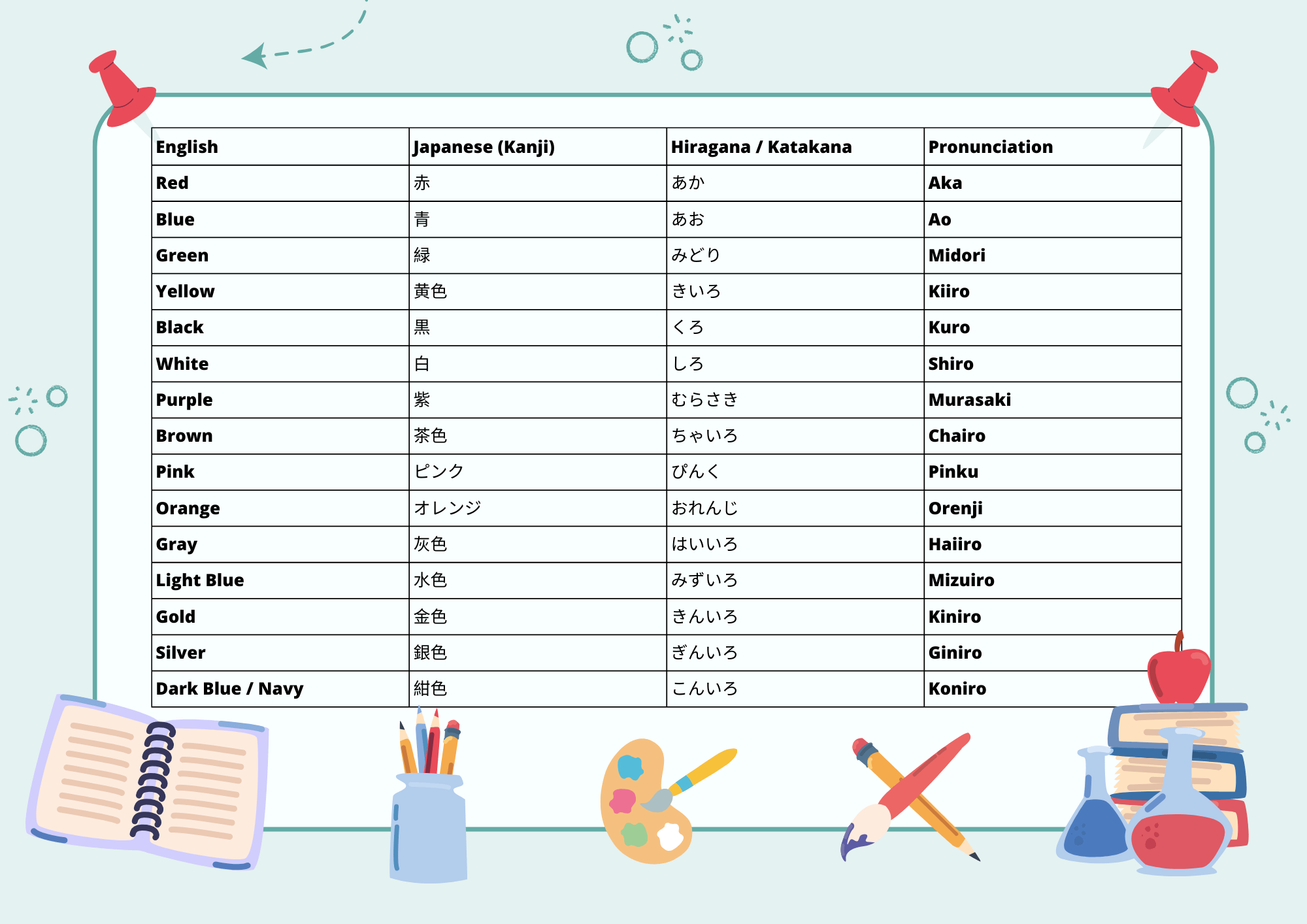
Exploring colors in Japanese is more than just learning new words. It’s a dive into the country’s rich culture. You have bright primary colors and softer shades, each with its own meaning. For example, red is ‘aka,’ blue is ‘ao,’ and yellow is ‘kiiro.’ Knowing these colors doesn’t just show language skills, it shows you understand what’s important in Japanese culture.
| English | Japanese (Kanji) | Hiragana / Katakana | Pronunciation |
| Red | 赤 | あか | Aka |
| Blue | 青 | あお | Ao |
| Green | 緑 | みどり | Midori |
| Yellow | 黄色 | きいろ | Kiiro |
| Black | 黒 | くろ | Kuro |
| White | 白 | しろ | Shiro |
| Purple | 紫 | むらさき | Murasaki |
| Brown | 茶色 | ちゃいろ | Chairo |
| Pink | ピンク | ぴんく | Pinku |
| Orange | オレンジ | おれんじ | Orenji |
| Gray | 灰色 | はいいろ | Haiiro |
| Light Blue | 水色 | みずいろ | Mizuiro |
| Gold | 金色 | きんいろ | Kiniro |
| Silver | 銀色 | ぎんいろ | Giniro |
| Dark Blue / Navy | 紺色 | こんいろ | Koniro |
Shades of Black, White, Grey, and Browns
These timeless shades, known as kuro (黒) for black, shiro (白) for white, and chairo (茶色) for brown, hold deep cultural meanings in Japan. Black and grey are seen as powerful and mysterious, often symbolizing wisdom and experience. White is revered for its purity and simplicity, frequently used in traditional ceremonies to signify new beginnings. Browns embody earthiness and harmony with nature, connecting to the Japanese appreciation for organic beauty in materials like wood and clay. Together, these shades reflect a balance of refinement and grounding.
Black Shades
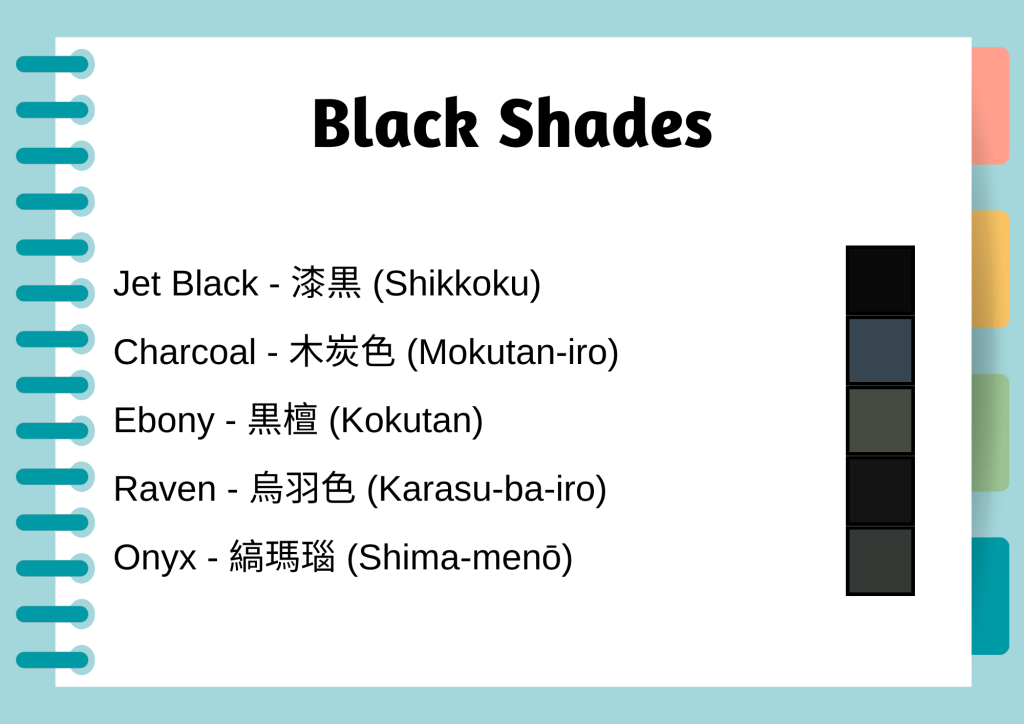
- Jet Black – 漆黒 (Shikkoku)
- Charcoal – 木炭色 (Mokutan-iro)
- Ebony – 黒檀 (Kokutan)
- Raven – 烏羽色 (Karasu-ba-iro)
- Onyx – 縞瑪瑙 (Shima-menō)
White Shades
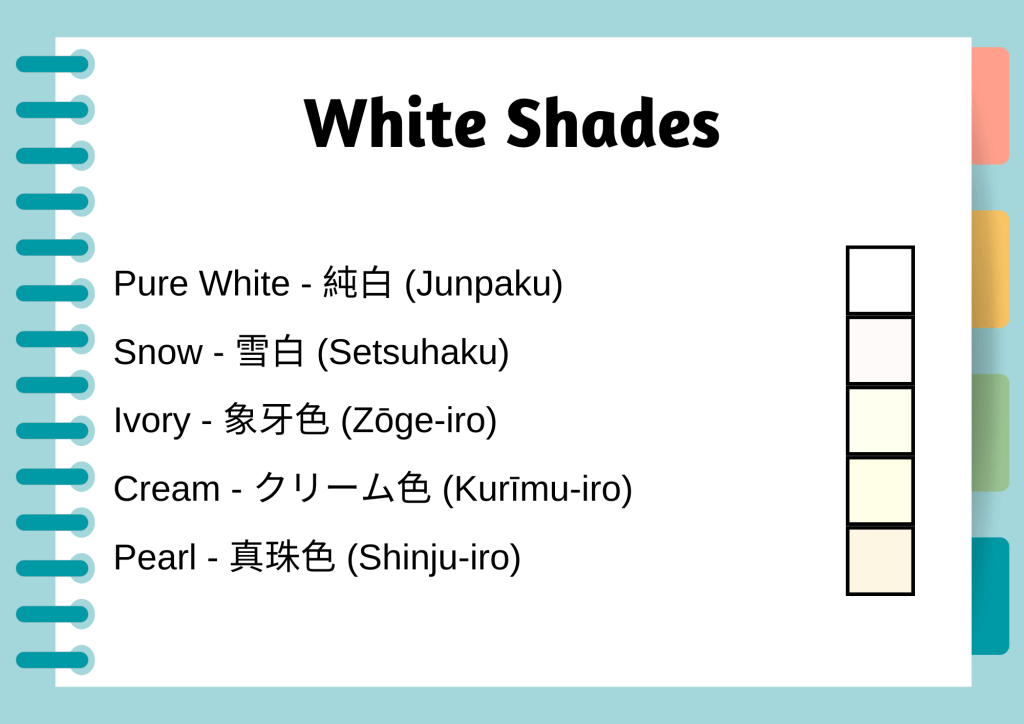
- Pure White – 純白 (Junpaku)
- Snow – 雪白 (Setsuhaku)
- Ivory – 象牙色 (Zōge-iro)
- Cream – クリーム色 (Kurīmu-iro)
- Pearl – 真珠色 (Shinju-iro)
Grey Shades
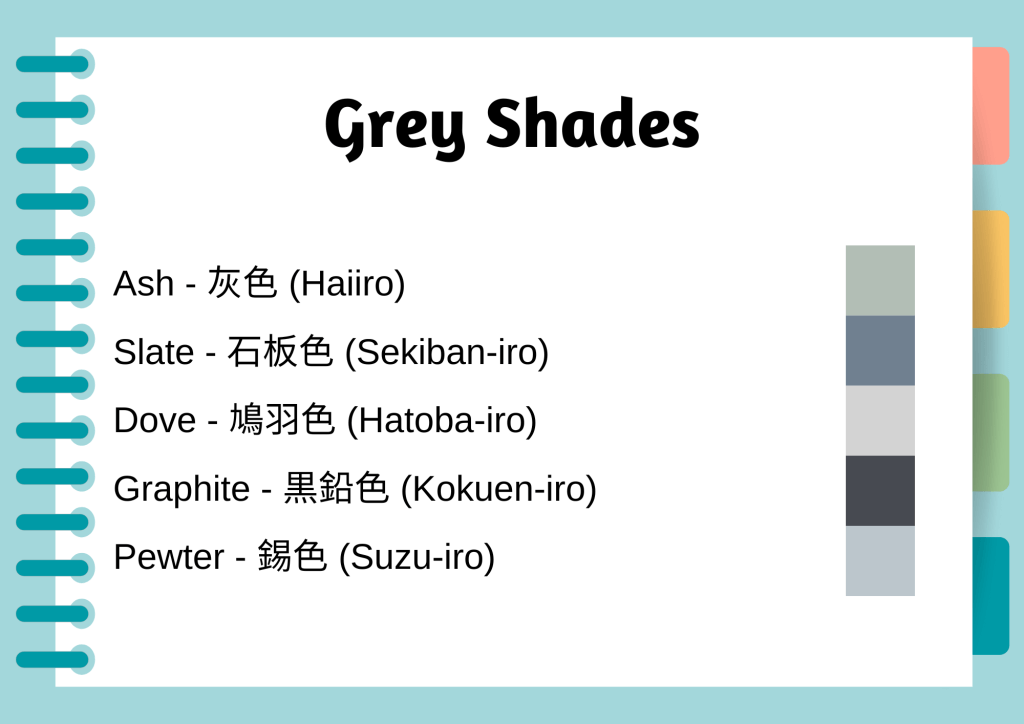
- Ash – 灰色 (Haiiro)
- Slate – 石板色 (Sekiban-iro)
- Dove – 鳩羽色 (Hatoba-iro)
- Graphite – 黒鉛色 (Kokuen-iro)
- Pewter – 錫色 (Suzu-iro)
Brown Shades
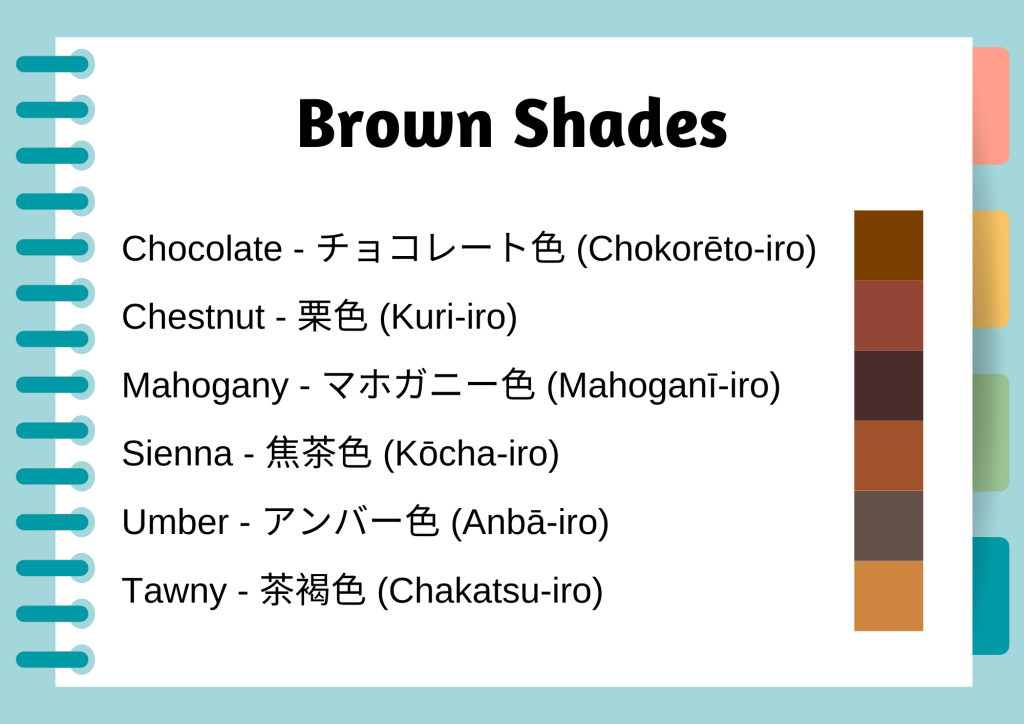
- Chocolate – チョコレート色 (Chokorēto-iro)
- Chestnut – 栗色 (Kuri-iro)
- Mahogany – マホガニー色 (Mahoganī-iro)
- Sienna – 焦茶色 (Kōcha-iro)
- Umber – アンバー色 (Anbā-iro)
- Tawny – 茶褐色 (Chakatsu-iro)
Also Read: Traditional Flowers In Japanese: Their Names And Hidden Meanings
Shades of Green and Blue
In Japanese culture, midori (緑) for green and ao (青) for blue resonate with nature’s beauty, from lush mountain forests to tranquil coastal waters. Green represents growth, life, and health, deeply tied to the idea of vitality and renewal seen in Japan’s lush landscapes. Blue, historically tied to the concept of “wa” (和), or harmony, evokes calm, stability, and trust. These shades reflect the Japanese philosophy of living in balance with nature, embracing a peaceful yet invigorating palette that soothes the mind and spirit.
Green Shades
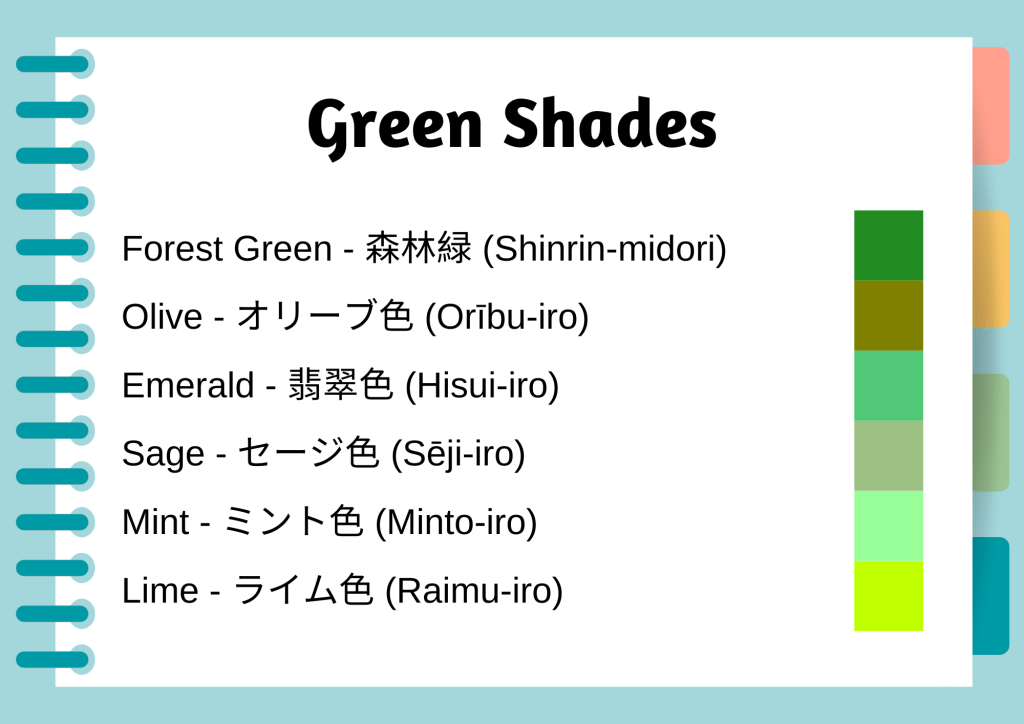
- Forest Green – 森林緑 (Shinrin-midori)
- Olive – オリーブ色 (Orību-iro)
- Emerald – 翡翠色 (Hisui-iro)
- Sage – セージ色 (Sēji-iro)
- Mint – ミント色 (Minto-iro)
- Lime – ライム色 (Raimu-iro)
Blue Shades
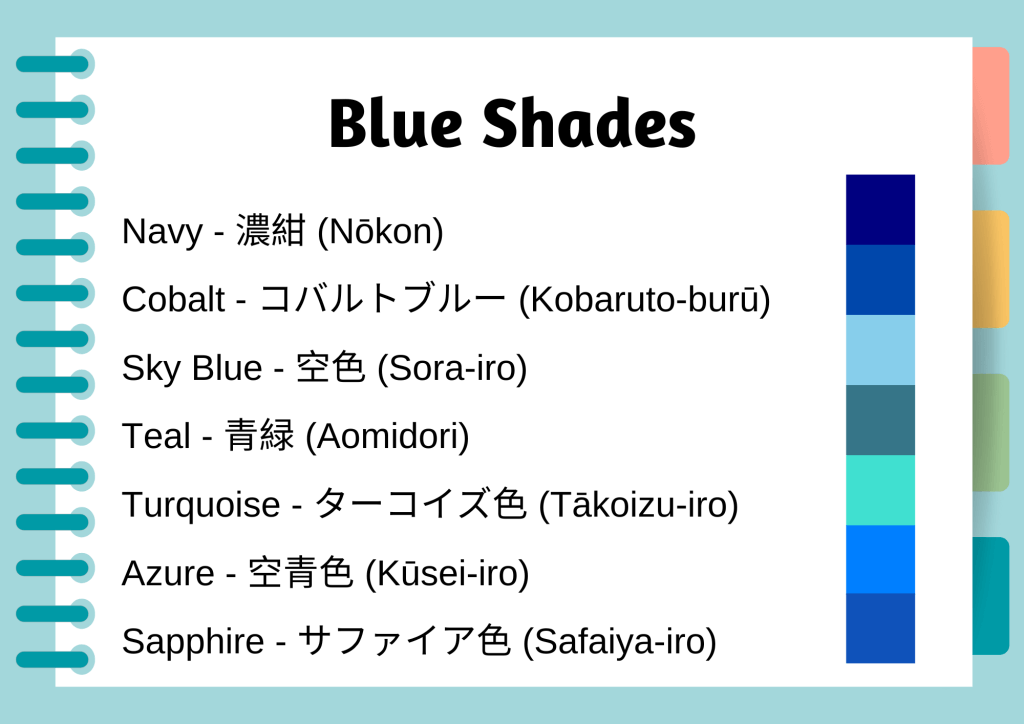
- Navy – 濃紺 (Nōkon)
- Cobalt – コバルトブルー (Kobaruto-burū)
- Sky Blue – 空色 (Sora-iro)
- Teal – 青緑 (Aomidori)
- Turquoise – ターコイズ色 (Tākoizu-iro)
- Azure – 空青色 (Kūsei-iro)
- Sapphire – サファイア色 (Safaiya-iro)
Shades of Pink and Purple
Pink, or momo-iro (桃色), and purple, or murasaki (紫), are culturally significant colors in Japan, each carrying rich symbolism. Pink, reminiscent of cherry blossoms, is beloved in Japanese aesthetics, symbolizing fleeting beauty, youth, and love. Purple is a color of nobility, elegance, and spirituality, traditionally associated with the aristocracy. These colors evoke both gentle warmth and mystique, reflecting Japanese ideals of romance, respect for tradition, and personal expression.
Pink Shades
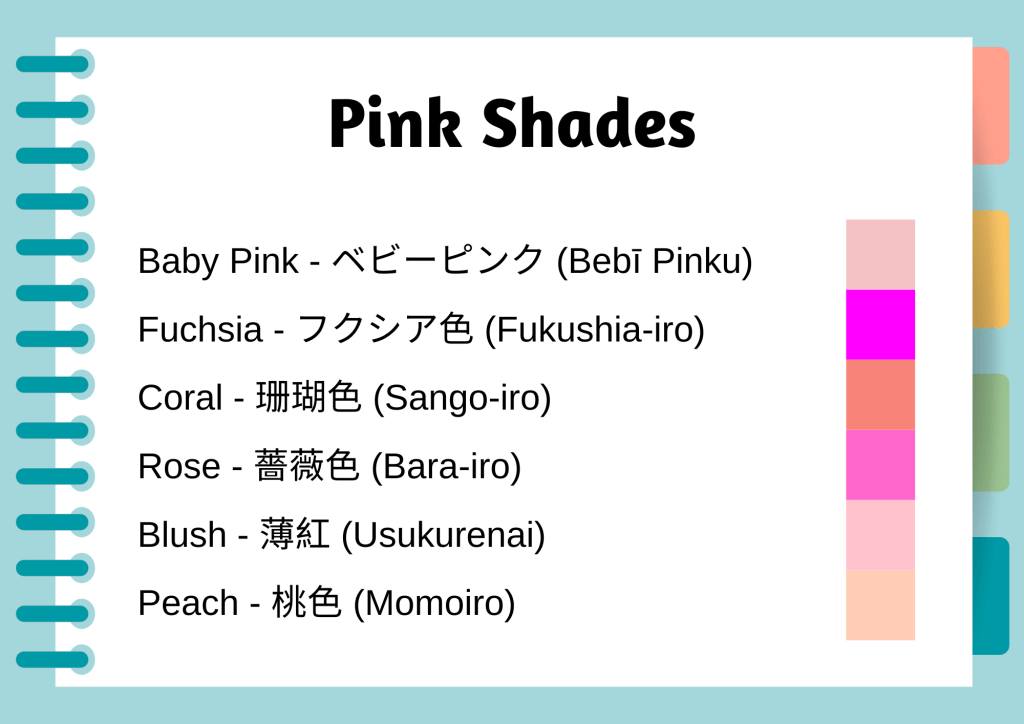
- Baby Pink – ベビーピンク (Bebī Pinku)
- Fuchsia – フクシア色 (Fukushia-iro)
- Coral – 珊瑚色 (Sango-iro)
- Rose – 薔薇色 (Bara-iro)
- Blush – 薄紅 (Usukurenai)
- Peach – 桃色 (Momoiro)
Purple Shades
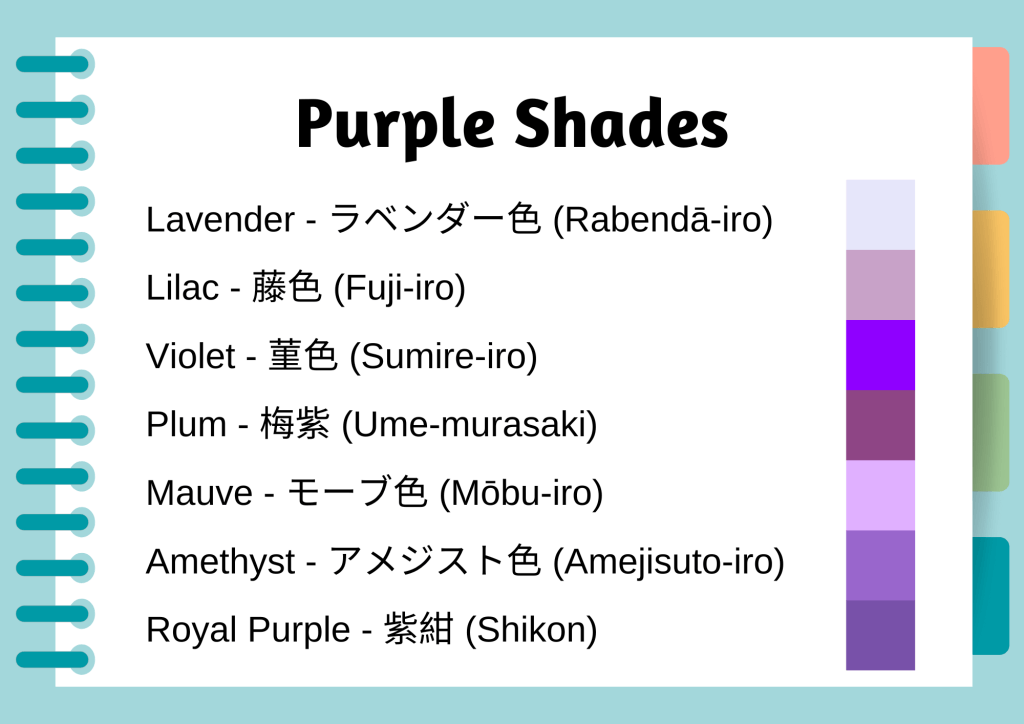
- Lavender – ラベンダー色 (Rabendā-iro)
- Lilac – 藤色 (Fuji-iro)
- Violet – 菫色 (Sumire-iro)
- Plum – 梅紫 (Ume-murasaki)
- Mauve – モーブ色 (Mōbu-iro)
- Amethyst – アメジスト色 (Amejisuto-iro)
- Royal Purple – 紫紺 (Shikon)
Also Read: How To Say “Hello” In Japanese: 21+ Unique Japanese Greetings
Shades of Red, Orange, and Yellow
In Japan, aka (赤) for red, orenji (オレンジ) for orange, and kiiro (黄色) for yellow are vibrant colors full of symbolic energy. Red is a powerful color, symbolizing life, joy, and celebration, and is often used in important festivals and temples to ward off negative energy. Orange and yellow evoke optimism and cheer, with orange linking to fall foliage and yellow symbolizing warmth and hope. These shades convey Japan’s love for color that celebrates life, strength, and a positive spirit. Together, they reflect an appreciation for life’s vibrancy and beauty.
Red Shades
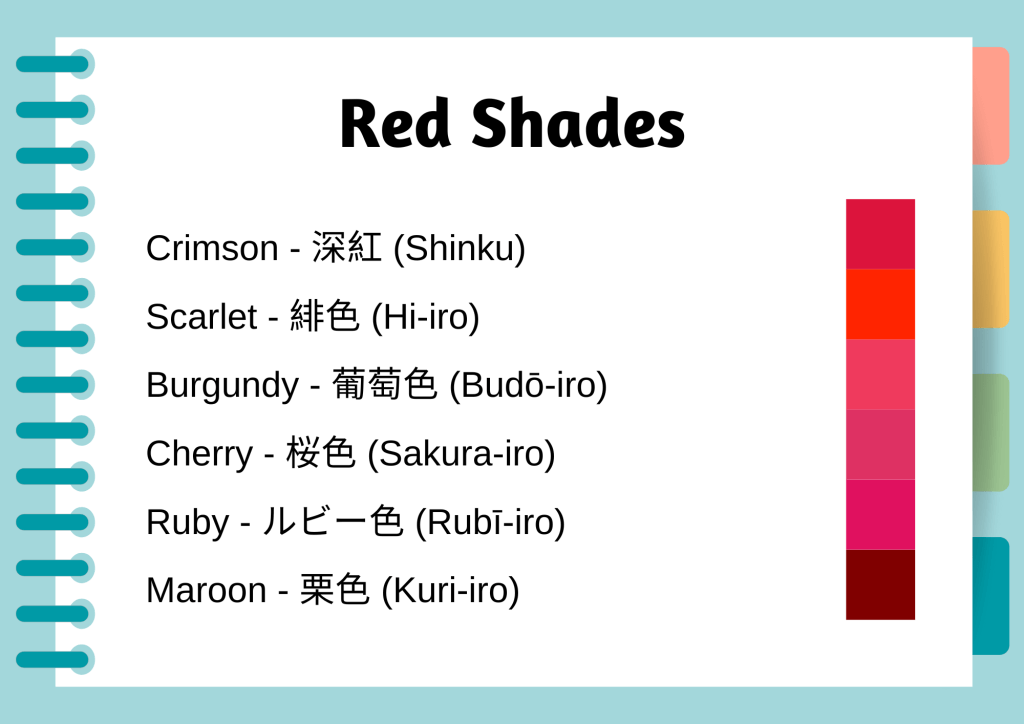
- Crimson – 深紅 (Shinku)
- Scarlet – 緋色 (Hi-iro)
- Burgundy – 葡萄色 (Budō-iro)
- Cherry – 桜色 (Sakura-iro)
- Ruby – ルビー色 (Rubī-iro)
- Maroon – 栗色 (Kuri-iro)
Orange Shades
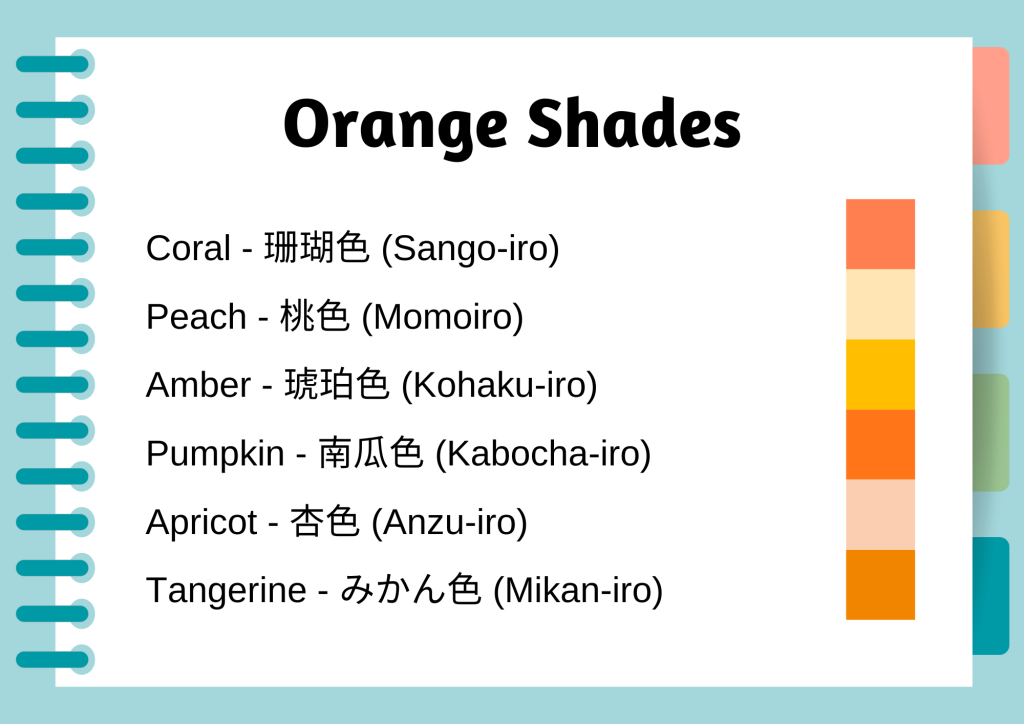
- Coral – 珊瑚色 (Sango-iro)
- Peach – 桃色 (Momoiro)
- Amber – 琥珀色 (Kohaku-iro)
- Pumpkin – 南瓜色 (Kabocha-iro)
- Apricot – 杏色 (Anzu-iro)
- Tangerine – みかん色 (Mikan-iro)
Yellow Shades
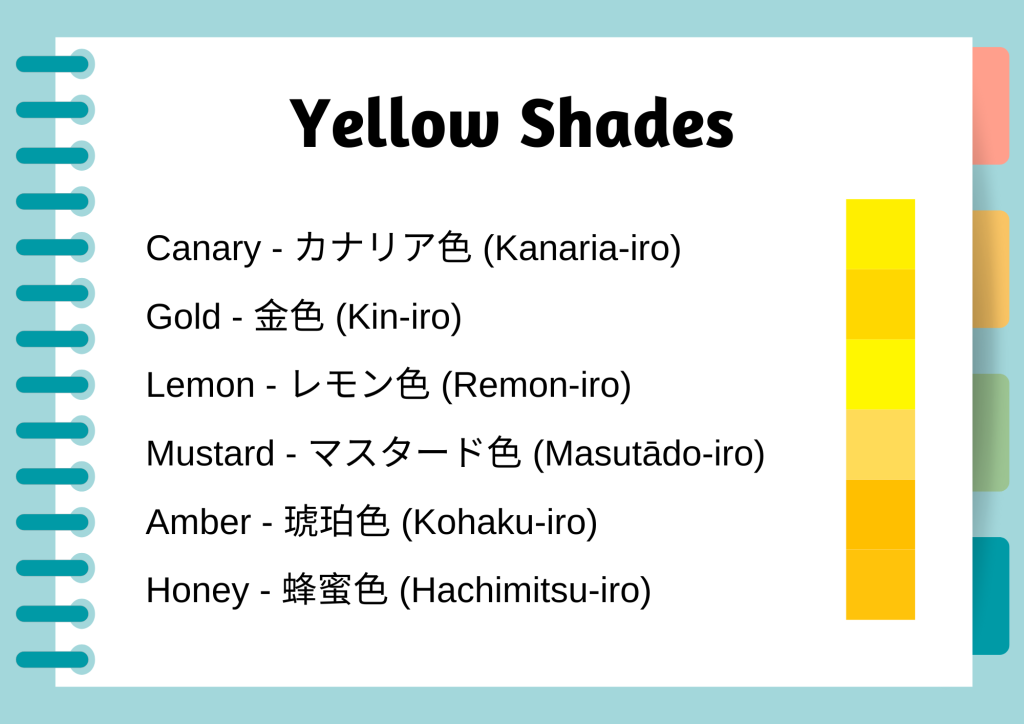
- Canary – カナリア色 (Kanaria-iro)
- Gold – 金色 (Kin-iro)
- Lemon – レモン色 (Remon-iro)
- Mustard – マスタード色 (Masutādo-iro)
- Amber – 琥珀色 (Kohaku-iro)
- Honey – 蜂蜜色 (Hachimitsu-iro)
Conclusion
To wrap it up, learning about colors in Japanese teaches us a lot about how the language works and what the culture values. Knowing these color terms makes it easier to communicate and gives us a deeper insight into Japan’s heritage. It’s really important for language learners to use this knowledge regularly. This way, they can fully understand and respect what each color means in Japan’s culture. This guide is a key tool for anyone looking to get better at speaking Japanese and understanding its cultural context. Keep visiting the Translation Blog to learn any language easily.

